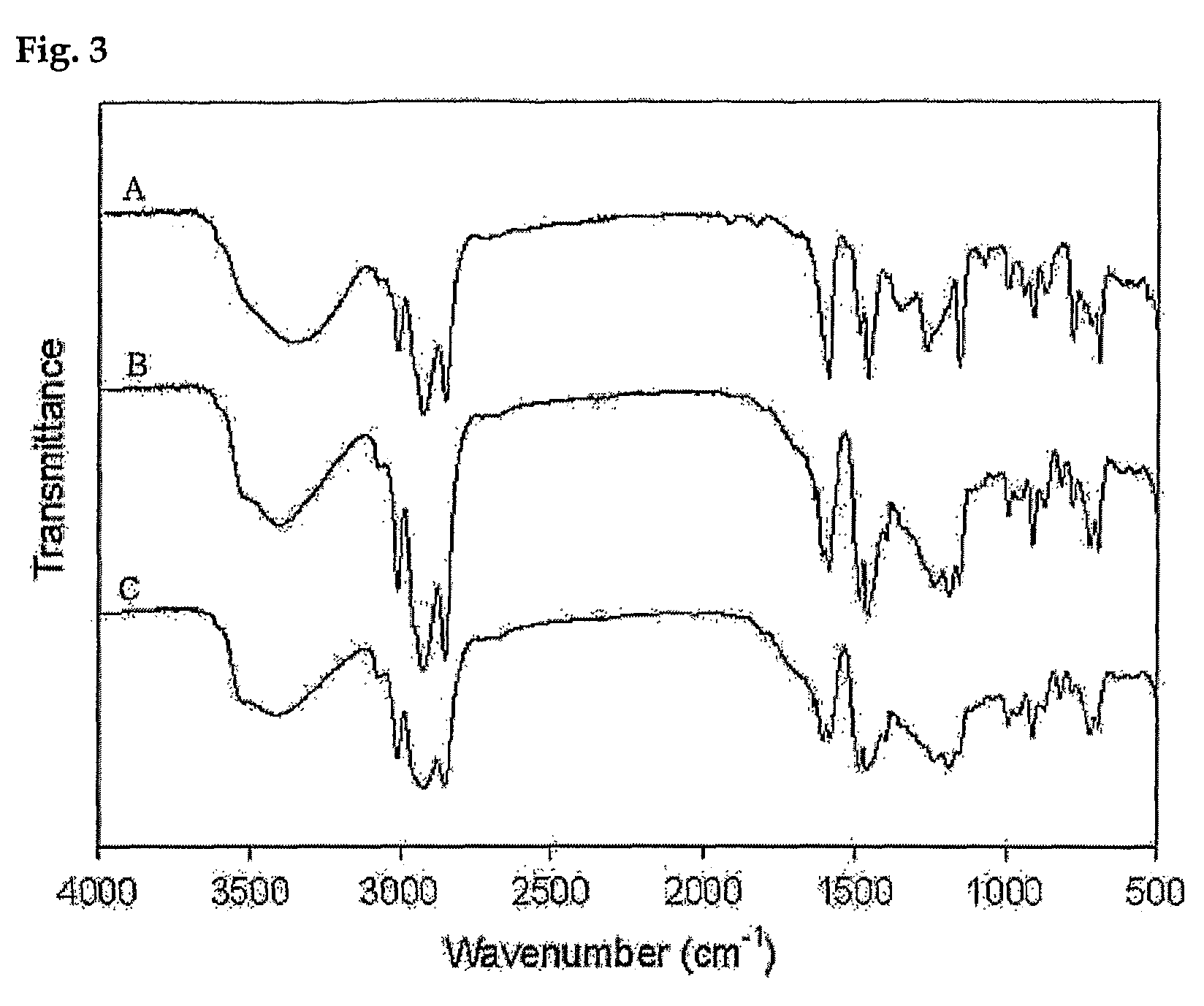Process for preparing phenolic polymer by using phenothiazines mediator
a technology of phenothiazines and phenolic polymers, which is applied in the field of preparing phenolic polymers using phenothiazines, can solve the problems that phenolic polymers are unlikely to form coatings, and phenolic compounds having significantly long alkyl chains at their meta-position cannot be polymerized by horseradish peroxidas
- Summary
- Abstract
- Description
- Claims
- Application Information
AI Technical Summary
Benefits of technology
Problems solved by technology
Method used
Image
Examples
experimental example 1
Evaluation on Antioxidation of Cured Coatings
[0043]The cured coatings were obtained by curing a phenolic polymer wherein cobalt naphthenate and methylethyl ketoperoxide were added to phenolic polymer prepared in the Example such as polycardanol, polycardol, polycardanol / phenol and polycardanol / ethylphenol.
[0044]1 ml of 500 pM 1,1-diphenyl-2-picryl hydrazine (DPPH) was added to 100 ml of distilled water and 1 g of coating was immersed in the resulting solution. The optical density of DPPH at 517 nm was measured with the lapse of time, which reflects the capacity of antioxidation. The results are summarized in Table 4.
[0045]
TABLE 4Phenolic polymerAntioxidationPolycardanol60Polycardol70Polycardanol / phenol copolymer50Polycardanol / ethylphenol40copolymerCommercial-available phenolic resin5(Novolak resin, Kukdochemical, Inc.)
[0046]As indicated in Table 4, the phenolic polymer of this invention shows a better antioxidation result than conventional ones. The improved antioxidizing ability ma...
experimental example 2
Evaluation on Antifouling Capacity of Cured Coatings
[0047]For evaluation on the antifouling capacity of each coating prepared in Experimental Example 1, the coating was immersed in sea water and the contamination by marine periphytons such as barnacles was examined. The results are summarized in Table 5.
[0048]
TABLE 5Antifouling capacityPhenolic polymer(No. of barnacles attached)Polycardanol6Polycardol1Polycardanol / phenol copolymer12Polycardanol / ethylphenol14copolymerCommercially available phenolic resin35(Novolak resin, Kukdochemical, Inc.)
[0049]As represented in Table 5, the attachment capacity of barnacles is significantly decreased by the cured coatings of phenolic polymer according to this invention. These results correspond to the antioxidation capacity indicated in Table 4.
PUM
| Property | Measurement | Unit |
|---|---|---|
| pH | aaaaa | aaaaa |
| concentration | aaaaa | aaaaa |
| enzyme reactivity | aaaaa | aaaaa |
Abstract
Description
Claims
Application Information
 Login to View More
Login to View More - R&D
- Intellectual Property
- Life Sciences
- Materials
- Tech Scout
- Unparalleled Data Quality
- Higher Quality Content
- 60% Fewer Hallucinations
Browse by: Latest US Patents, China's latest patents, Technical Efficacy Thesaurus, Application Domain, Technology Topic, Popular Technical Reports.
© 2025 PatSnap. All rights reserved.Legal|Privacy policy|Modern Slavery Act Transparency Statement|Sitemap|About US| Contact US: help@patsnap.com



